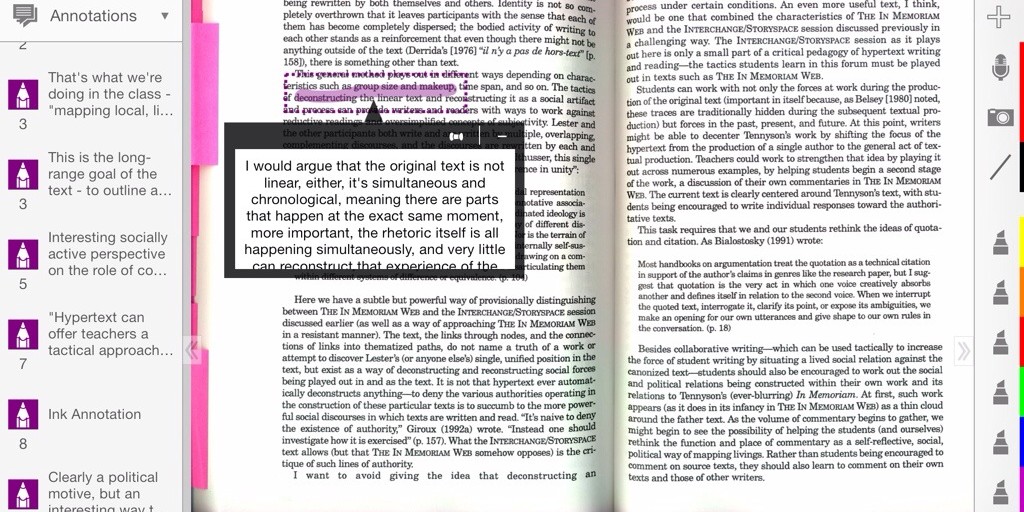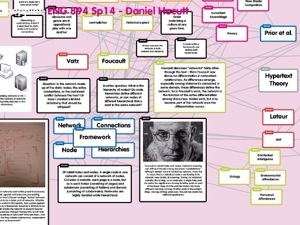Mind Map #9: Ecology, Environment & Affordances

I sense the least connection between the two concepts of ecology and affordances this week, likely because I don’t feel I gave these readings justice. One issue is the reading affordance – I’m using iPad rather than print, and the readings this week were not great scans. As a result, I didn’t annotate as completely, and my collected annotations did not include full text of the original – only my notes. When I review my notes, I typically review them as annotations rather than within the text, meaning without the original text included with the comment, I get a little lost among disjointed annotations.
At any rate, the relationship I see is that an ecology may produce a distributed intelligence, and the distributed intelligence within an ecological system depends on environmental affordances. Some of these affordances may be real, but in networked computer environments of hardware, software, and especially user interfaces, the affordances may be more likely to be perceived than actual.

Mindmap: This post entirely generated from iPad (including the Popplet), and the environment was a bit restrictive.
I found ecology quite similar to the systems we’ve seen throughout our adventures in theory – activity systems in CHAT and ANT, genre systems in Spinuzzi and Bazerman. I think what differs in ecology is the organic character of the environment and the affordances of that environment. Organic in the sense of growth, development, and advancement (although I would hesitate to suggest evolutionary advancement – more advancement of understanding and intellect) rather than in the sense of organic or inorganic objects as actors in networks.
Mapping the affordances in this ecology of my classroom was enlightening. Mapping Bateson, Gibson, and Norman among other theorists was not as enlightening, in part because I’m unclear as to where they belong. Norman’s contribution is particularly difficult, as I see it applying to the (in my opinion) far more practical, operationalized realm of user interface and user experience than network theory. I think this has to do with mediation, but I’ll be looking for new ways to draw connections between user interface, perceived affordances, and network theory.

I found your post really interesting. I wonder if part of the trouble that you had relates to the fact that Bateson and Gibson pre-date the other readings and were influential upon it, but as they’ve been subsumed into theories even more complex that they don’t resonate as much now. I think if we get an opportunity to teach this class again, we will swap the readings’ order. And yes, Norman is very focused on the design of interfaces in the perceived affordances work.